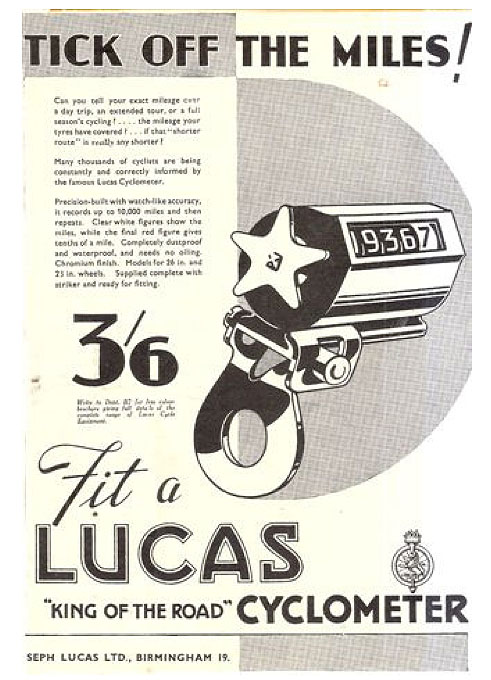
A bicycle odometer similar to the ones used by the authors during the early years of measuring trails in the Canadian Rockies.
When we set out to create the first edition of the Canadian Rockies Trail Guide, we needed a way of accurately measuring the trails, many of which had never been measured before. Professional surveying wheels with their small wheels and substantial weight were out of the question; we required a wheel large enough to roll over rocks, roots and other trail obstacles wed to an accurate odometer.
Canadian Rockies trail wheel
That’s when we came up with the idea of a bicycle wheel with an odometer attached—the same set-up that cyclists used for recording mileage on their rides. A local bicycle shop in Banff made two wheels for Bart and me by taking a standard 27″ bicycle wheel, attaching it to a set of forks, and inserting “banana bars” so we could push it along the trails. A small, mechanical odometer provided accurate distance to the nearest tenth-of-a-mile.
Small mechanical odometers were standard issue for cyclists in those days, and they provided remarkable accuracy when the wheel circumference matched the odometer’s calibration. A small peg attached to a spoke on the wheel would turn the daisy wheel on the odometer on each rotation. As long as the peg and the odometer where aligned (and the odometer didn’t get clogged with mud, as it did on a couple multi-day backpacks), the set-up was virtually foolproof. A crescent wrench and a spare odometer provided all the backup insurance we needed.
By the end of that first summer, Bart and I had chalked up a combined total of over 1300 kms on our wheels. And as we continued our trail guide updates, the wheels just kept on spinning.

Trail guide co-author Brian Patton with his trail wheel. This original wheel is still in use for checking trail distances and has clocked nearly 6000 kms. Mike Kerr photo.
Mechanical odometers were eventually replaced by battery-powered digital models. Small and light, but not really much more accurate than the mechanical ones. For several seasons, we ran with both digital and mechanical odometers, and we seldom saw any differences in measurements.
Digital odometers were a problem when batteries ran out (new batteries and recalibration required). And if you set the wheel down along the trail, there was always the danger you’d accidentally push the on-off button and turn the unit off. That’s when the back-up mechanical odometer saved the day.
I often think of how many hikes I did in the mountain parks pushing a wheel. It seemed the wheel was a constant companion since I’d take it on repeat trips to check side trips and new trails. I distinctly recall hiking out from Mt Assiniboine once and thinking to myself: “This is the fourth time I’ve measured the Bryant Creek trail. When will it ever end?”
And through all those years, I always dreaded meeting other hikers on the trail, with their bemused smiles and inevitable comments: “Do you ride that thing?”
I push the trail wheel a lot less these days. Since GPS units are accurate for short trail checks, I always have one with me for revision work and general interest. But the wheel still hangs in my storage shed, ready and waiting for the next time I really need an accurate measurement on a new or rerouted trail.

0 Comments